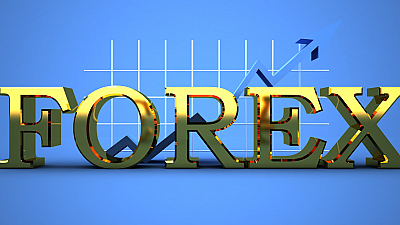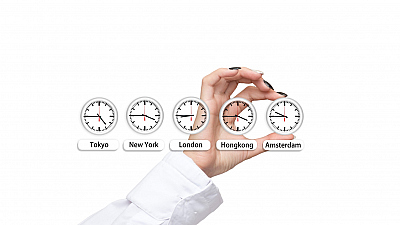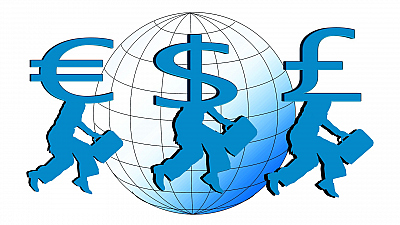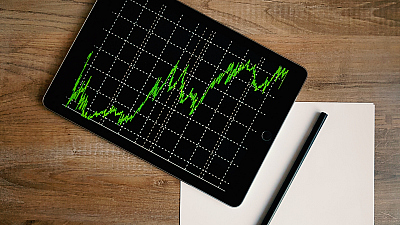Every transaction in the markets is a two-way deal consisting of a purchase of one currency (or asset) and a sale of another currency (or asset), at a given date. There are multiple variations for the parameters of the deal that give a wide range of opportunities for the trader. Knowing those characteristics is an important part of understanding the financial markets.
These are the most popular types of transactions.
SPOT
A spot transaction is the fastest way to exchange a currency. Because of its simplicity, no contract is signed for this transaction. The delivery (or settlement) date is within two business days. The spot price is the current market rate of the currency.
In an OTC market, buyers and sellers shape the spot price by posting their buy and sell orders. For liquid markets, such as the forex market, the spot price can change by the second, as orders get filled and new ones enter the market constantly.
The spot market is also known as “Physical market” or “Cash market” because of the immediate swap of the traded assets. The quote (or price) of the asset that is displayed on every trading platform is the spot price. The spot is the most widely used transaction by individual traders.
FORWARD
The forward is a binding OTC contract for exchanging one currency against another at a specific future date. The exchange rate is called forward exchange rate and is comprised of two components. The first is the spot price of the currency pair and the second is the so-called forward (or swap) points. They are determined by the interest rates of the two currencies and can be of positive or negative value. Typically, a higher yielding currency has negative points, while a lower yielding currency has positive points.
When the forward points have a positive value and are added to the spot rate, this is called a forward premium. When the forward points are negative, they are subtracted from the spot price and this is a forward discount. If the forward exchange rate is exactly equivalent to the spot rate, at the time of making the contract, the forward exchange rate is at par.
On the delivery date the forward is settled, and the contracted amounts are exchanged at the forward rate, no matter what the current spot price is. This makes the forward transaction very suitable for hedging and is actively used for this purpose by international companies, large corporations and banks.
FUTURES
Futures and forwards are similar in a way, as they both have a contracted future delivery date, amount and rate. The big difference is that, while forwards are customizable in terms of volume and date, futures contracts have fixed parameters and are traded on organized exchanges only.
A margin, set by the exchange, is required, for opening and maintaining the futures position. The clearing house of the exchange guarantees the transactions, so the probability for default is very close to zero.
Futures contracts are structured on commodities, currencies and exchange indices. The most popular commodities for futures contracts are crops (like wheat and corn), oil and gas.
The futures contracts are frequently used by speculators, who usually close out the contract prior to maturity. Thus, real delivery does not happen, and a cash settlement is said to have taken place.
Futures are marked-to-market daily, which gives speculators the option to settle the future at any date before the delivery date. The futures market is very liquid so entering and exiting is easy.
OPTIONS
The option is a contract that gives its holder the right (the option), but not the obligation, to buy or sell a defined quantity of the underlying asset (like a currency) at specified future date and price (called exercise or strike price). An option that gives the right to buy the currency is called a call option, and the option that gives the right to sell the currency is called a put option.
The act of buying or selling the underlying asset is called exercising the option. The buyer pays a price for the option, called premium. The premium is the price for the option contract and is different from the exercise/strike price, which is the price of the underlying asset.
The option premium is the maximum risk of the buyer, and the maximum profit for the seller of the option. The profit potential for the buyer and the risk potential of the seller of the option are unlimited.
Option contracts are complex financial derivatives. There are many components that play a role in calculating the risk – market volatility, interest rate differentials, time to expiration, current price of the currency pair, etc.
SWAP
The swap is a two-part forex transaction used to shift (to swap) the value date of an existing position to another date. The two parts of the swap are called “legs” and are opposite to each other. The first leg (let’s say buy EUR/USD) is usually the part with the closer value date and the second leg (the opposite – sell EUR/USD) is usually the part with the new (further) date.
The price of the currency pair is calculated much like that of the forward, so it’s dependent on the net interest difference of the two currencies. This difference is also known as “carry”. On the two delivery dates, each leg is settled at the pre-defined price, regardless of the current spot rate.
Swaps are mainly used to roll an open forex position forward or backward in time. For example, a company that hedges its sales or purchases and has entered into a forward contract that expires at a certain date, might need to swap the amount, in order to adjust the delivery date to the hedged cash flow.
CONTRACTS FOR DIFFERENCE (CFD)
CFDs offer traders the opportunity to profit from price movements without actually owning the underlying asset. This is a popular form of derivative trading, that allows traders to speculate on the change in the prices of fast-moving financial instruments, like indices, commodities, shares, currency pairs, treasuries, etc. This type of transaction is not available to US investors.
The contract for difference is an agreement between the investor and the CFD broker to exchange the difference in the value of an asset, between the time the contract is opened and the time the contract is closed. Although the contract reflects the price of the underlying asset, the CFD investor never actually owns the asset.
CFDs allow investors to easily take a position in both directions. If traders expect the price to rise, they can open a long position (buy). If they expect the price to fall, they can open a short position (sell). The open position can be closed at any time by an offsetting trade. The net difference between the purchase price and the sale price is credited to/debited from the investor’s account.
This type of derivatives provides high leverage, which means traders need to deposit only a small percentage of the full value of the contract in order to open the position. The deposit is also known as a margin.
Brokers profit from the spread – traders pay the ask price when buying and take the bid price when selling. So, for a position to be profitable, it needs to cover the spread first. This fact is compensated by the access to the underlying asset at a lower price (compared to buying the asset outright).




